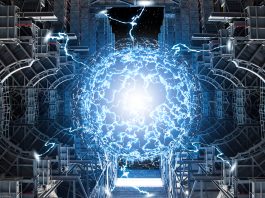The US and Japan have revealed the two global scientific superpowers will combine to advance fusion energy capabilities.
The fusion energy deal was struck following a meeting in Washington between US Deputy Secretary of Energy David Turk and Japan’s Minister of Education, Sports, Science and Technology, Masahito Moriyama.
The partnership will see the US Department of Energy (DOE) and Japan’s Ministry of Education, Culture, Sports, Science and Technology (MEXT) work to accelerate the demonstration and commercialisation of fusion energy.
The partnership will focus on optimising the US’ Bold Decadal Vision for Commercial Fusion Energy and Strategy for International Partnerships in a New Era of Fusion Development, and Japan’s Fusion Energy Innovation Strategy.
What is fusion energy?
With the potential to reshape global efforts towards achieving net-zero carbon emissions, fusion energy stands as a linchpin in enhancing energy security and resilience.
Fusion energy is a promising yet elusive form of power generation that mimics the process that powers the Sun and stars.
At its core, fusion energy involves combining lightweight atomic nuclei, such as isotopes of hydrogen, to form heavier elements, releasing vast amounts of energy in the process.
The most commonly pursued fusion reaction on Earth involves the isotopes of hydrogen, deuterium, and tritium.
Unlike conventional nuclear fission reactors, which split atoms to release energy, fusion reactors produce energy by fusing atoms together.
This process generates immense heat and pressure, replicating the conditions found in the Sun’s core.
The primary advantage of fusion energy lies in its virtually limitless fuel supply. Deuterium can be extracted from water, while tritium can be produced from lithium.
However, despite decades of research and significant advancements, harnessing fusion energy for practical use remains a monumental challenge.
Achieving this milestone could unlock a nearly inexhaustible, clean, and safe source of energy with minimal radioactive waste and zero greenhouse gas emissions, revolutionising the global energy landscape.
US and Japan deepen collaborations
Collaboration between the United States and Japan in the field of fusion energy isn’t new. Over the years, both nations have engaged in a spectrum of joint activities, ranging from exchange programs to joint research initiatives.

The new partnership will focus on six pillars:
- Scientific and technical advancements: The partnership aims to address the complex scientific and technical challenges inherent in delivering commercially viable fusion energy
- Shared access to facilities: Exploring opportunities for shared access and development of fusion research facilities to maximise mutual benefits
- Harmonisation of regulatory frameworks: Promoting international harmonisation of regulatory frameworks and standards that are crucial for facilitating the smooth transition towards fusion energy deployment
- Global supply chain development: Identifying and supporting the development of resilient global supply chains essential for the commercialisation of fusion energy
- Public engagement: Fostering public engagement to garner support for fusion energy deployment and ensuring a smooth transition towards clean energy
- Skills development: Promoting skills development to cultivate a robust, inclusive, and diverse workforce capable of driving the fusion sector forward
The strategic partnership between the US and Japan marks a pivotal moment in the journey towards fusion energy.
With innovation, collaboration, and a shared commitment to sustainability, both nations are poised to unlock the transformative potential of fusion on a global scale.









